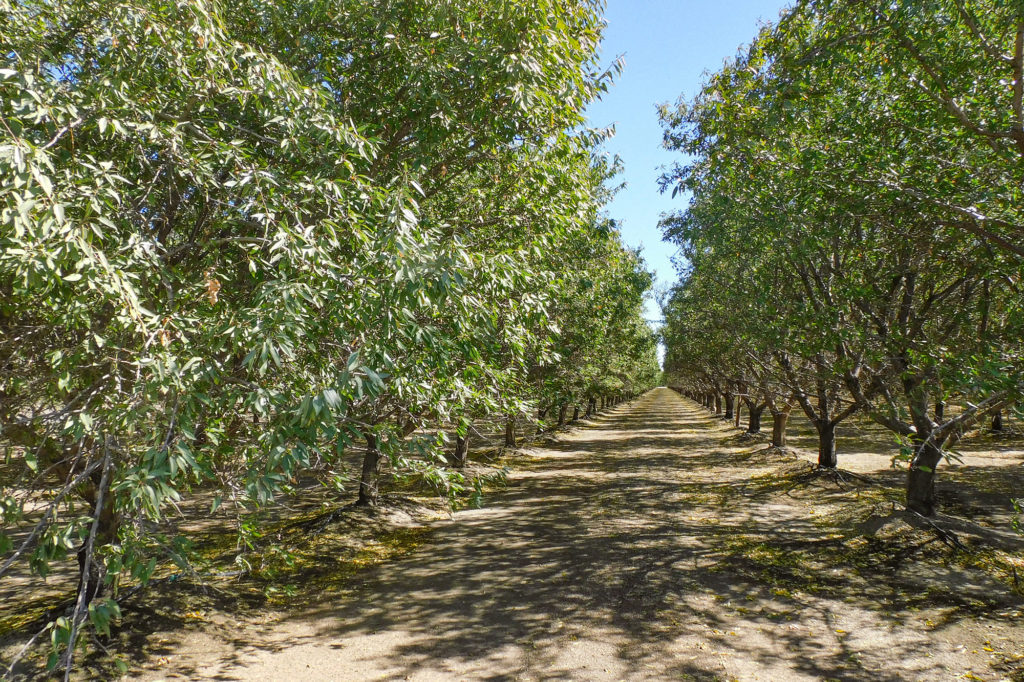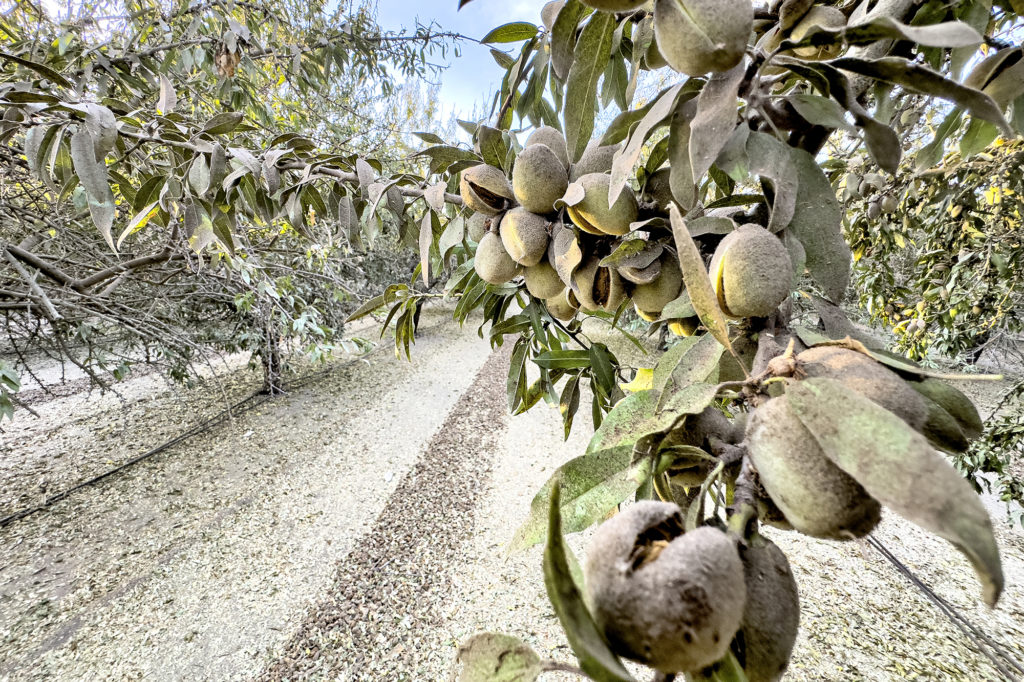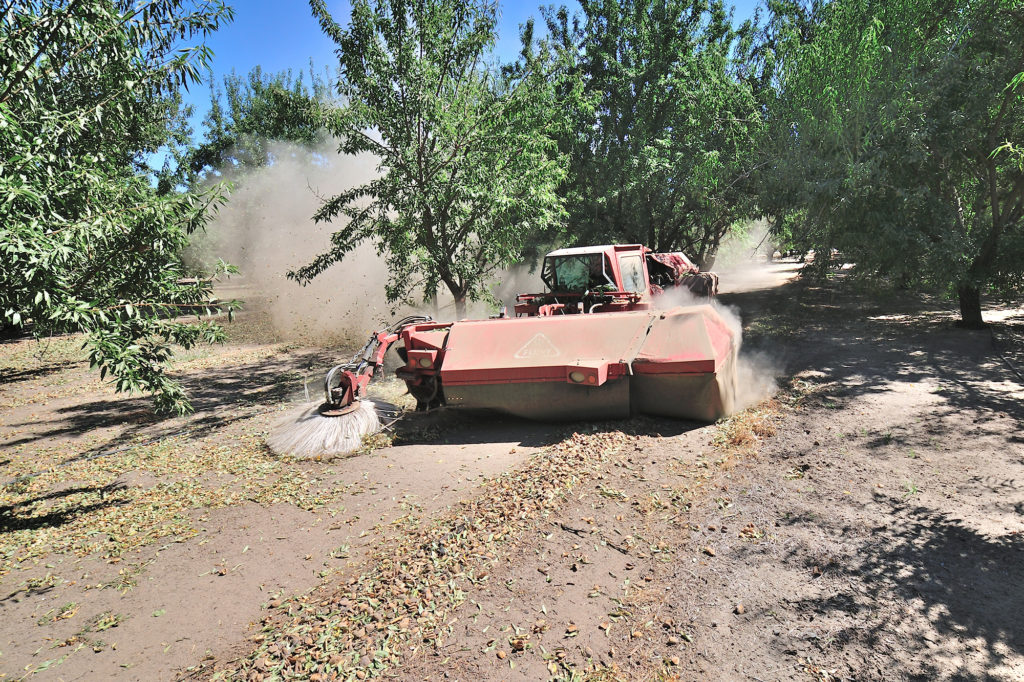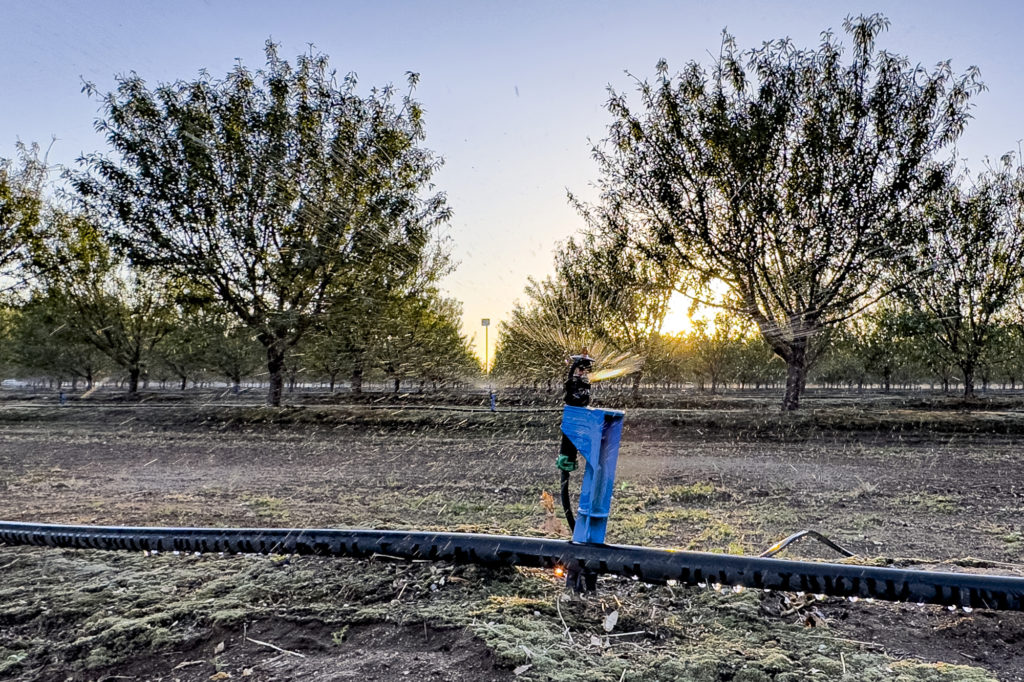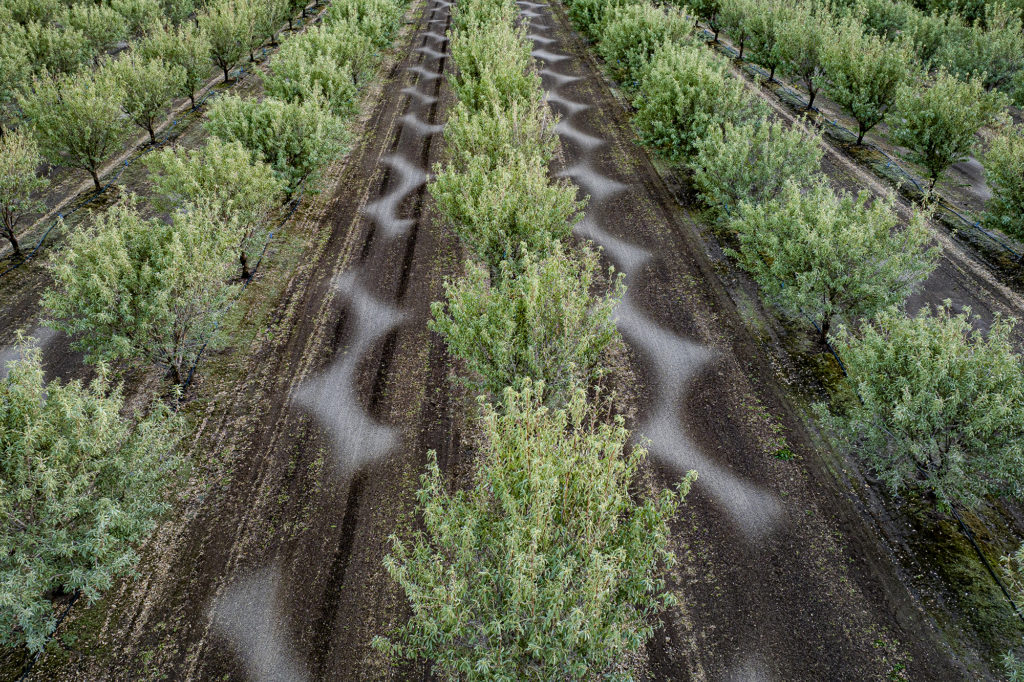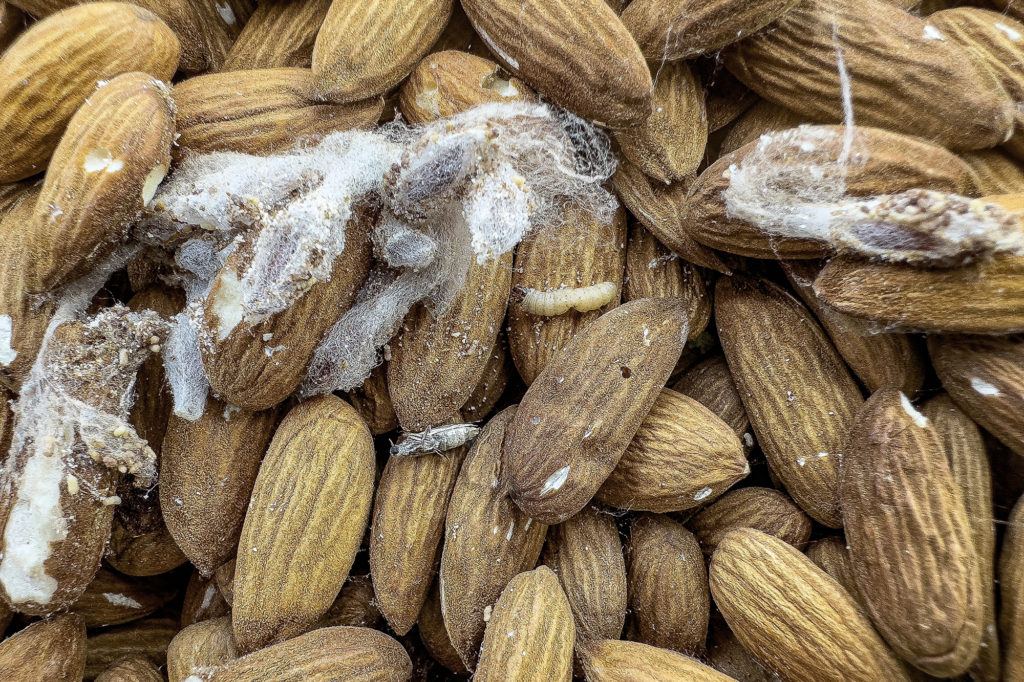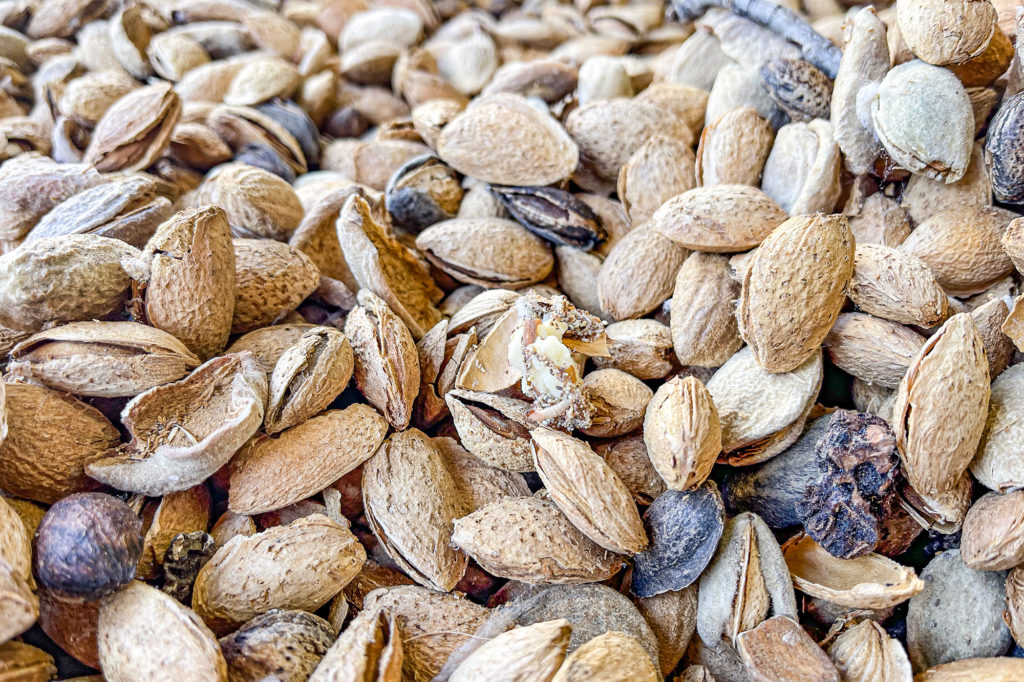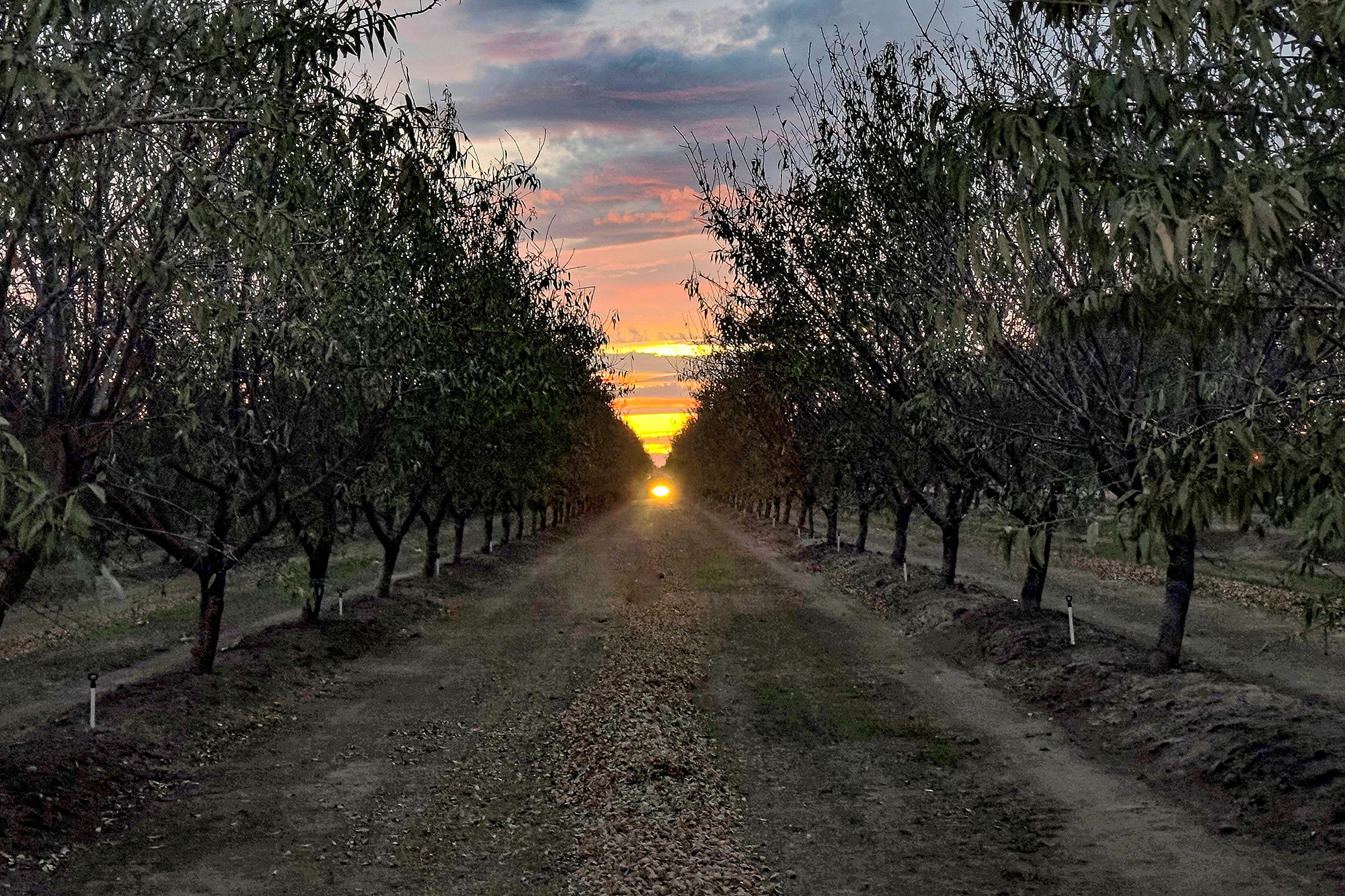
This report covers conditions and observations made between Monday, August 28, and Sunday October 1, 2023. The next scheduled report will be posted on Monday, November 6, 2023. In the event of any significant occurrences prior to that date, this site will be updated as soon as possible.
Less than ideal weather plagued growers in all areas of the Central Valley during September, presenting sub-optimal conditions for the 2023 harvest. Daily maximum temperatures were widely reported in the mid and upper 90’s in the period’s opening days, with areas of the southern San Joaquin Valley reporting readings as high as 100 degrees. However, temperatures dipped into the low and mid 80’s as the month progressed, heralding the end of summer transition. Morning lows followed a similar trend, ranging from the mid and upper 60’s down to the mid 50’s by the end of the period.
Several weather systems during the month delivered brief, but occasionally heavy showers to the areas of the Central Valley. Most notable was a storm system that dropped heavy rain in areas of the Sacramento and northern San Joaquin Valleys during the final weekend of the month. Growers reported receiving trace amounts to as much a 1.5 inch of rain in the heaviest downpours.
Growers throughout the Central Valley pushed ahead with their harvest during September, working their way through challenging conditions. The diverse maturity levels noted in our previous report continued to hinder harvest operations as growers waited for the optimal time to begin shaking. Comparatively high humidity levels have combined with the variable maturity to extend the time required to adequately dry the crop on the ground. The occasional shower has only made problems worse, and the rainfall recorded in the period’s final days will pose additional challenges for those in the most impacted areas. Growers with crop flat on the ground will have to delay sweeping until the nuts dry enough to be safely windrowed and conditioned. Those with crop in windrows will have to condition the product to remove soil and debris in order to prevent fungal growth and dry the crop enough to be hulled and shelled.
Observers are reporting that the last of the Nonpareil and Independence was being picked up during the final week of the month and that harvest operations were underway in advanced plantings of Aldrich, Carmel, Butte, and Padre. Growers in the most advanced areas along the west side of the San Joaquin and Sacramento Valleys have also begun shaking the last-to-harvest Monterey and Fritz. Observers have reported that growers in advanced areas with only early and mid-harvesting varieties have completed their harvest and moved on to post-harvest tasks.
Quality and yield considerations have been at the forefront of discussions throughout the harvest. Reject levels attributable to Navel Orange Worm (NOW) noted in our previous report have continued throughout the harvest. Damage levels have reached double-digit values for many growers. Greatest damage and losses have been observed in the Sacramento and southern San Joaquin Valleys with comparatively lesser damage in the northern San Joaquin Valley. Deliveries from huller/sheller operations with the highest reject levels have contained all stages of development, small larvae, large larvae, pupae, and adult moths. Damage from NOW is so prevalent that the mention of Brown Spot, caused by Plant Bugs, which had reached troubling levels in previous years has been knocked out of conversations this year. Growers and observers are reporting that excessive NOW damage is now extending into the other varieties.
In addition to reducing the pace of harvest, the elevated humidity levels and variable maturity levels have produced challenging conditions for huller/sheller operations.
- Stockpiling in-hull almonds with excessive moisture levels can promote fungal growth within the pile. Almonds should not be piled when hulls are in excess of 12% moisture and kernels are above 6%.
- Excessive moisture causes hulls to be pliable or “rubbery,” slowing the hulling process and making them more difficult to separate, potentially increasing foreign material and chipped kernels in the finished product.
- Piles of hulls produced during the hulling/shelling process with excess moisture can spontaneously combust, forcing huller/sheller operations to move the hulls to market as soon as possible.
The rainfall received at the end of the period will serve to complicate hulling and shelling over the coming weeks.
Growers in the San Joaquin Valley are widely reporting reduced load counts coming from the orchards compared to last year’s production. Huller/shellers are also reporting reduced turnout levels; the percentage of finished kernel weight vs the weight of in-hull almonds removed from the orchard. This is resulting in lower than forecast per-acre yields in most Nonpareil plantings, particularly in the northern San Joaquin Valley. Many huller/shellers there are reporting yield levels running 20% or more below 2022 crop totals. This is leading many growers to question the official 2023 crop production forecast.
Measured by the amount of crop harvested thus far, harvest operations are running approximately 15 days behind last year. Growers are well aware that each day will bring a few minutes less sunshine, along with a potential cooler temperatures and increased humidity, all conspiring to make the balance of the harvest even more challenging. While the current weather forecast calls for maximum temperatures in the 90’s during the first week of October, all are feeling the pressure to bring the crop in as quickly as possible.
By Mel Machado, Vice President of Member Relations
Photos By: Christine Ivory and Mel Machado

